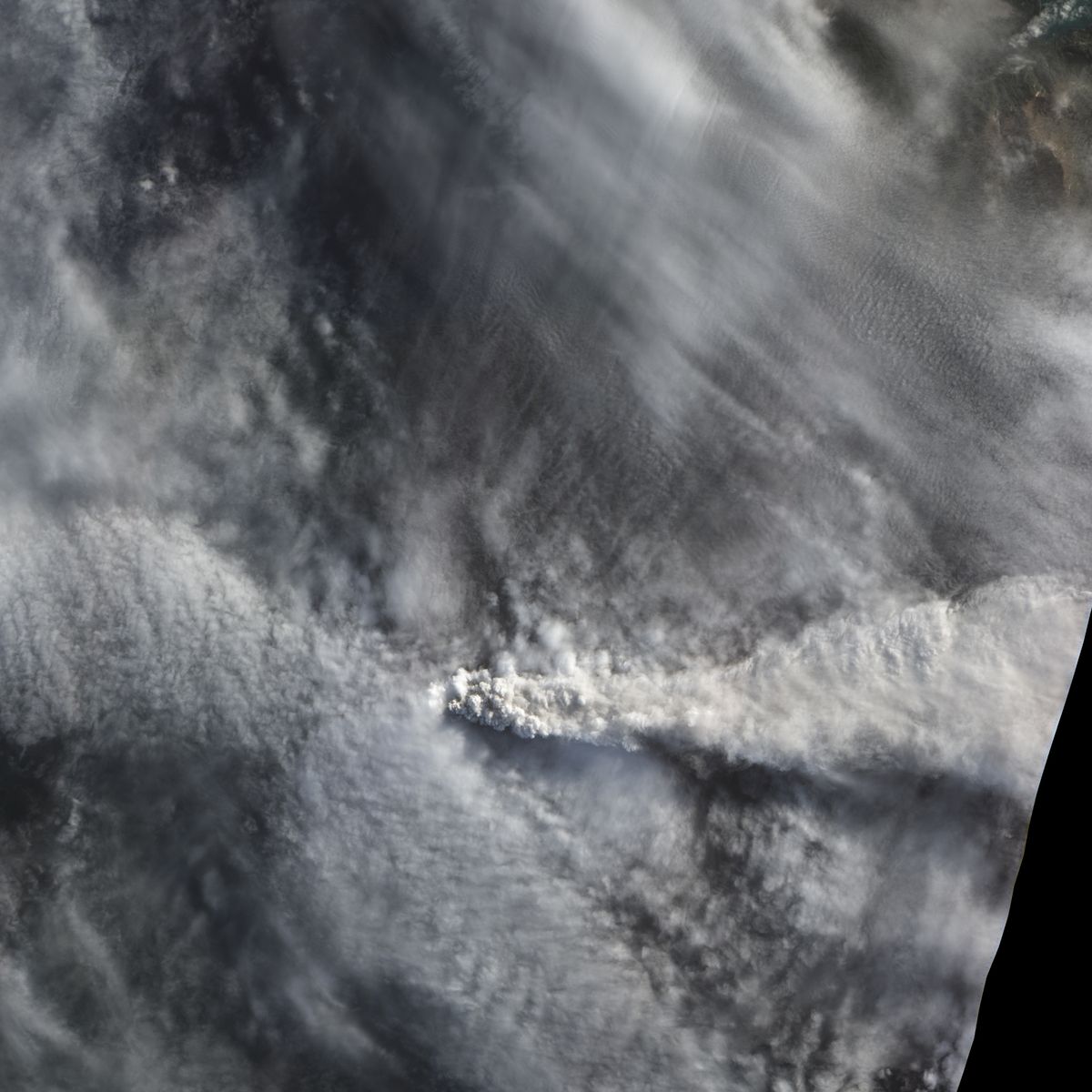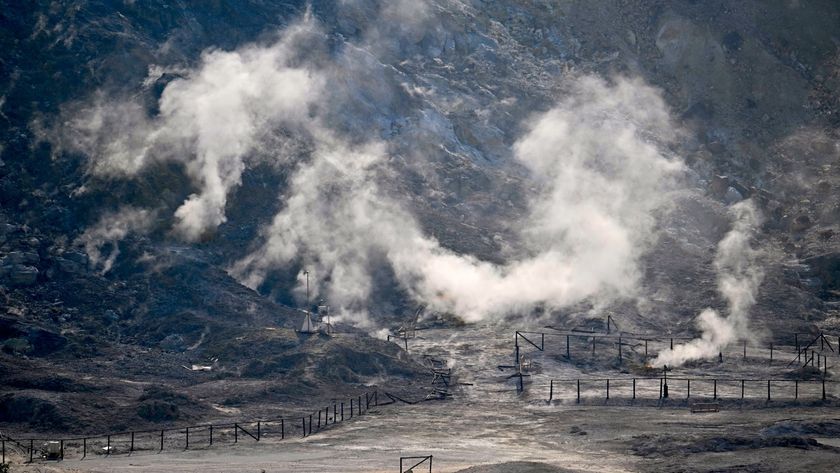Chile Volcano Unleashes Massive Plume of Ash (Photo)

The Calbuco volcano in southern Chile awoke with a vengeance on April 22, splashing lava down its slopes and sputtering a plume of ash high into the atmosphere. Over the past 10 days, the volcano has erupted twice more. The plume darkened skies and buried neighboring towns in layers of soot up to 2 feet (0.6 meters) thick.
This photo captured April 25, two days after the second eruption — by the Advanced Land Imager on NASA's Earth Observing-1 satellite — shows Calbuco's plume rising high above Chile's cloud deck.
Scientists are keen on studying the plume and, more specifically, the accompanying amount of sulfur dioxide. Data from the Ozone Monitoring Instrument on NASA's Aura satellite show that 300,000 to 400,000 tons of sulfur dioxide were released into the atmosphere over the three days since the first eruption. But scientists are unsure about what effect the gas may have on the climate. [Big Blasts: History's 10 Most Destructive Volcanoes]
When sulfur dioxide gas interacts with water vapor, it can create sulfate aerosols. These particles reflect sunlight and can have a cooling effect on the planet, unlike greenhouse gases, which absorb sunlight and therefore heat the Earth. Sulfate aerosols are so effective at cooling the planet that some scientists have even considered the possibility of injecting them into the atmosphere on a regular basis.
"Satellite sulfur dioxide [SO2] data are critical for understanding the impacts of volcanic eruptions on climate," said Simon Carn, an associate professor of geological and mining engineering and sciences at the Michigan Technological University and a member of the team that operates the Ozone Monitoring Instrument on the Aura satellite. "Climate modelers need estimates of SO2 mass and altitude to run their models and accurately predict the atmospheric and climate impacts of volcanic eruptions. SO2 plume images also provide unique insights into the atmospheric transport and dispersion of trace gases in the atmosphere, and on upper atmospheric winds."
Scientists say sulfur dioxide from the Calbuco eruptionwas spewed as high as 13 miles (21 kilometers) — into a layer of the atmosphere called the stratosphere — where it can linger for a longer time than it can when it's closer to the Earth's surface. Eventually, the sulfur dioxide gas will become sulfate aerosols, but it is not known if these particles will have a cooling effect on the planet.
Understanding this process, and its effect on the Earth, is essential for refining climate models. Although a single event, like Calbuco's eruption, won't cause such a dramatic effect, it can hint at larger trends, Carn said in a statement. A study published in the journal Nature in November 2014 suggests that the cumulative effects of multiple volcanic eruptions over the last decade have helped to slow the rate of global warming.
Sign up for the Live Science daily newsletter now
Get the world’s most fascinating discoveries delivered straight to your inbox.
Follow Shannon Hall on Twitter @ShannonWHall. Follow Live Science @livescience, Facebook & Google+. Original article on Live Science.












